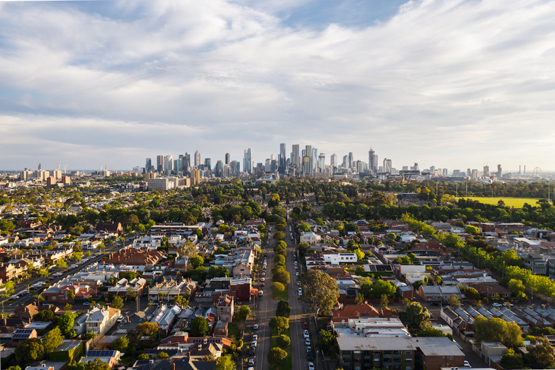Big four banks expect rate hike in 2022

NZ has joined the rest of the big four banks in predicting an interest rate hike in 2022 as the Reserve Bank concedes inflation is outpacing forecasts.
Following the RBA’s first board meeting of the year, ANZ economists brought forward their forecasts on when the first rate hike would occur, now tipping September 2022, and possibly earlier.
“We expect the RBA to start lifting the cash rate in September; for the cash rate to lift to 0.75% by November 2022 and then reach 2% by the end of 2023,” ANZ’s head of Australian economics David Plank said.
Economists at the nation’s big four banks expect a rate hike within months. Picture: Getty.The RBA on Tuesday held the cash rate steady at a record low of 0.1% and said it was “prepared to be patient” with interest rates as it monitored inflation and wages growth.
However, RBA governor Philip Lowe noted inflation had picked up “more quickly” than expected, prompting the central bank to upgrade its economic forecasts.
“The central forecast is for underlying inflation to increase further in coming quarters to around 3.25%, before declining to around 2.75% over 2023 as the supply-side problems are resolved and consumption patterns normalise,” Mr Lowe said.
Previously, the RBA had forecast underlying inflation would be 2.25% by the end of 2021 and hold at that level until mid-2023.
“While inflation has picked up, it is too early to conclude that it is sustainably within the target band,” Mr Lowe said, noting wages growth was still some way off the rate needed to keep inflation sustainably at target.
But Mr Plank said the RBA should get “the confirmation it seems to want from wages” by mid-August, when the Wage Price Index is released for the June quarter.
“We don’t completely rule out wages growth in both the Wage Price Index and GDP data showing sufficient momentum by Q1 to convince the RBA it should move sooner than our September expectation,” Mr Plank said, pointing to a potential rate hike in June.
Economists at all four major lenders now expect the RBA to begin hiking rates in 2022, with Westpac and CBA both tipping an August lift-off, while NAB sees the first increase occurring in November.
Underlying inflation back within the RBA’s 2-3% target range. Picture: Getty.However, PropTrack economist Paul Ryan said that while the RBA had opened the door to a 2022 rate hike, 2023 was still the most likely option.
“The door is definitely open for a 2022 hike, although I don’t think it’s the RBA’s current expectation,” Mr Ryan said.
“Mr Lowe has explicitly said they are willing to endure inflation above the target while assessing inflation is demand-driven and that wages are recovering.
“That is likely to leave the cash rate unchanged until at least late 2022, even if the economy outperforms the RBA’s updated expectations.”
Mortgage costs on the move
While the RBA maintains a wait-and-see approach, Finance Bizz and Mortgage Choice chief executive Susan Mitchell said that hasn’t stopped lenders from repricing their home loan products.

“We saw a lot of movement in rates in the second half of 2021 and this has continued into 2022,” Ms Mitchell said.
Fixed term mortgage rates have been on the rise for several months. Picture: realestate.com.auWith fixed term mortgages on the rise, she said borrowers had begun to favour variable rate loans.
“Since the COVID-19 pandemic began in 2020, we have seen a strong trend towards borrowers choosing to fix part or all of their home loan; however, recent increases in fixed rates have seen this trend reverse in favour of variable rate home loans since September 2021.
“If current pricing trends continue, I think we will continue to see demand for variable rate loans grow over the coming months.
“However, with speculation the RBA may raise the cash rate towards the end of the year, we may see more borrowers fixing their rates.”
Mortgage sizes have grown in line with property prices. Picture: realestate.com.auIt comes as lending data released by the Australian Bureau of Statistics on Tuesday showed a record $32.8 billion worth of loans were issued during December.
“December’s rise was driven by a 5.3% rise in the value of new owner-occupier loan commitments,” ABS acting head of finance and wealth Amanda Seneviratne said.
Investor lending also grew by 2.4% to reach a record high of $10.3 billion.
With a rate hike potentially just months away there are concerns many borrowers who have taken out a mortgage recently will feel the squeeze, with mortgage sizes also hitting new highs.
According to the ABS, the average loan size for owner occupiers reached $602,000 nationally in December, up 18% or $92,000 compared to a year earlier.
Average loan sizes reached new highs in all states and territories except Queensland and Tasmania.


